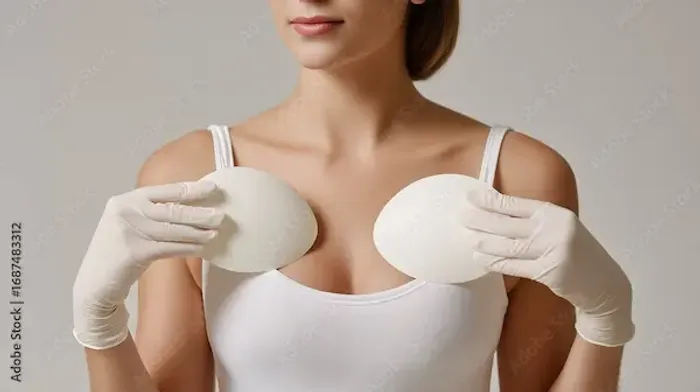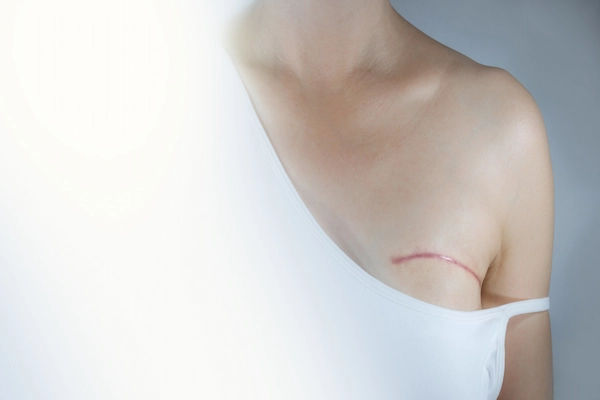Guide to Who Are Right Candidates Breast Enhancement Surgery
Know about the breast enhancement process, the right candidate for it, age, lifestage and timing influence, safety criteria, realistic goals, lifestyle changes, recovery planning and more.

Written by Dr. Rohinipriyanka Pondugula
Reviewed by Dr. M L Ezhilarasan MBBS
Last updated on 21st Oct, 2025

Introduction
Thinking about breast enhancement surgery, but not sure if you’re the right candidate? You’re not alone. Breast enhancement—whether through implants, fat transfer, or a lift—is one of the most requested cosmetic procedures worldwide. Yet the most important question isn’t “Which implant is best?” It’s “Am I the right candidate for enhancement right now?” This guide brings together expert criteria from top medical sources and real-world surgical insights to help you understand candidacy, risks, and timing. We’ll walk through health requirements, life stage considerations, expectations, and lifestyle factors, and we’ll explain how different techniques fit different bodies and goals. You’ll also learn what happens during a consultation, how to prepare safely, and which red flags suggest waiting.
Our goal is to help you decide—confidently and safely—if you’re the right candidate for enhancement surgery and which path suits your needs. Where relevant, we include trusted research and links to authoritative references. If you need personalised advice about your medical conditions or pre-op readiness, consider consulting a doctor online with Apollo24|7, and remember that some pre-operative tests can be arranged via convenient home collection.
Consult a Top Gynaecologist for Personalised Advice
Understanding Breast Enhancement Options
Know about the Breast enhancements
Right Candidates for Breast Enhancement Surgery
Breast enhancement refers to surgical procedures designed to improve breast volume, shape, or position. The three main
approaches are implants, fat transfer, and breast lift (mastopexy). Knowing how each option works helps you see where you might fit best.
Augmentation with implants (saline vs silicone)
Breast augmentation with implants adds volume using either saline (sterile salt water) or silicone gel implants. Silicone
implants tend to feel more like natural breast tissue, while saline implants are filled after placement and may allow
smaller incisions [1][2]. With silicone implants, routine imaging (MRI or ultrasound) is recommended at intervals to
check for silent rupture, per FDA guidance [5]. Implants are not lifetime devices; many patients need replacement or revision over time [4][5]. If you want significant, predictable volume and upper-pole fullness, implants are often the most reliable choice.
Fat transfer augmentation
Fat transfer moves your own fat from one area (e.g., abdomen, thighs) to the breasts after purification. It offers a
natural look and feel, avoids foreign materials, and can contour donor areas. However, volume gains are modest and unpredictable (some fat resorbs), so it’s best for subtle enhancement or correcting minor asymmetries [1][6]. Candidates
need sufficient donor fat and realistic expectations.
Breast lift (mastopexy) and combination procedures
A breast lift repositions the nipple and tightens skin to correct sagging (ptosis). It does not significantly increase volume,
so some patients combine a lift with implants or fat transfer to achieve both lift and fullness [1][2]. If your main concern
is droop rather than size, a lift—alone or combined—is often the right option.
Are You the Right Candidate? The 3‑Fit Test
To decide if you’re the right candidate for enhancement, use the 3‑Fit Test: Body Fit, Lifestyle Fit, and Mind Fit.
Body Fit: Anatomy, skin elasticity, BMI, stability
- Anatomy: Skin quality, chest width, breast base diameter, nipple position, and tissue thickness all affect what’s safe and
achievable. Tissue-based planning reduces risks like implant edge visibility [6]. - BMI and stability: Extreme BMI (very low or high) may increase risk of complications (wound healing issues,
anaesthesia risk). A stable weight for 3–6 months helps outcomes [2][3]. - Skin elasticity: Good elasticity supports implants better; reduced elasticity may require a lift.
- Health: Non-smokers with controlled medical conditions are safer candidates [2][3].
Lifestyle Fit: Work, sport, caregiving, recovery support
- Work demands: Heavy lifting jobs require longer restrictions; desk roles can often resume in 1–2 weeks, depending on
surgeon advice [1][3]. - Sports: High-impact/upper-body sports (CrossFit, tennis) need a recovery plan; submuscular placement can transiently
affect strength. - Home support: Someone should help for the first 24–72 hours. Childcare and pet care should be arranged.
Mind Fit: Goals, expectations, and body image readiness
- Realistic goals: Enhancement refines proportion; it will not cure self-esteem challenges. High-quality providers screen
for body dysmorphic disorder and ensure informed consent [2]. - Decision ownership: Choose surgery for yourself—not to meet others’ expectations.
- Long-term acceptance: Implants bring surveillance and potential future surgeries [4][5]. If that feels unacceptable,
consider fat transfer or a lift.
Age, Life Stage, and Timing
The influence of age, stage and timing is:
Minimum age and breast maturity
Most surgeons recommend waiting until breast development is complete. In many regions, you must be at least 18 for
saline and 22 for silicone implants, reflecting FDA labelling recommendations. Surgeons also consider emotional maturity and the ability to consent responsibly.
Planning around pregnancy and breastfeeding
Pregnancy and breastfeeding can change breast volume and position. If you plan pregnancy soon, consider waiting to
finalise the enhancement, or discuss flexible options with your surgeon. Many people can breastfeed after augmentation,
especially when incisions avoid the areola and when ducts/glands are preserved [9]. If you’ve finished breastfeeding
and notice deflation/ptosis, a lift with or without augmentation might be appropriate [1][2].
Post-weight-loss and peri-menopause considerations
After major weight loss, skin laxity often calls for a lift. Around peri-menopause, changes in skin and soft tissue may
affect shape and recovery. Stable weight, good nutrition, and a tailored plan improve outcomes.
Health Criteria and Safety Considerations
Smoking status, chronic conditions, and medications
- Smoking/nicotine: Increases wound-healing problems and infection risk. Most surgeons require stopping nicotine 4–6
weeks before and after surgery. - Chronic conditions: Diabetes, uncontrolled hypertension, clotting disorders, or autoimmune disease require careful
evaluation. Optimise conditions with your physician before proceeding. - Medications/supplements: Some increase bleeding risk (e.g., certain pain relievers, herbal supplements). Your surgical
team will provide a pre-op list to pause. Apollo24|7 offers convenient home collection for basic pre-op labs like
complete blood count (CBC) when appropriate.
Red flags and when to postpone
- Active infections, untreated psychiatric conditions, unstable weight, and significant unrealistic expectations are reasons to wait.
- Recent breastfeeding (within months) can change measurements; waiting allows tissues to stabilise.
- If you cannot commit to post-op restrictions or follow-up imaging, reconsider implants.
Imaging and surveillance responsibilities with implants
For silicone implants, the FDA recommends periodic imaging (MRI or ultrasound) to detect silent rupture after the
initial years post-surgery [5]. Patients must be comfortable with long-term follow-up. If you develop new swelling or a
late-onset fluid collection, especially with textured implants, seek evaluation for rare issues like BIA-ALCL [7]. If
concerning symptoms persist, consult a doctor online with Apollo24|7 for prompt guidance and triage.
Setting Realistic Goals and Choosing Size/Technique
The realistic goals include:
Tissue-based planning and chest wall dimensions
Surgeons often measure breast base width, soft tissue thickness, and skin stretch to pick implant width and projection
safely [6]. Proper sizing reduces rippling, edge visibility, and asymmetry.
Sizing methods (sizers, 3D imaging, wish photos)
- In-office sizers and 3D simulations help visualise outcomes.
- Wish photos can help communicate goals, but your anatomy sets the safe limits.
Case example: A 32-year-old postpartum patient wanting a fuller but natural look might be guided to moderate-profile
silicone implants sized to her base width, or a conservative fat transfer if minimal volume is desired.
Natural look vs high-profile look: trade-offs
Higher projection can deliver upper-pole fullness but may look less natural on thin tissue. Natural-looking outcomes
usually track with proportionate width and moderate projection. Balance aesthetics with tissue safety to be the right
candidate for enhancement that lasts.
Lifestyle, Work, and Recovery Planning
Activity restrictions for athletes and manual workers
Early recovery often limits lifting, overhead motion, and high-impact exercise for several weeks. Desk work may
resume within 1–2 weeks; manual labour may require 3–6 weeks,s depending on the surgical plan and your surgeon’s
advice. Plan a gradual return and communicate job demands during consultation.
Support systems and home setup
Arrange help for meals, childcare, pets, and rides home from surgery. Prepare a recovery area with medications, water,
light snacks, phone chargers, and comfortable pillows. Sleep positioning (often elevated) can aid comfort early on.
Return-to-work timelines and practical tips
- Light desk work: ~1–2 weeks (surgeon-specific).
- Manual/overhead work: often longer restrictions.
- Athletes: Low-impact cardio early, per surgeon approval; full contact/upper body may wait weeks.
- If pain, swelling, or redness worsen after initial improvement, consult a doctor. If symptoms persist beyond two weeks,
consult a doctor online with Apollo24|7 for further evaluation.
Risks, Complications, and How to Lower Them
- Common risks (capsular contracture, rupture, infection)
- Capsular contracture: Scar tissue tightening around the implant, causing firmness or distortion. Risk reduction may
include meticulous surgical technique and pocket choices. - Rupture/deflation: Saline deflation is obvious; silicone rupture can be “silent,” requiring imaging surveillance [5].
- Infection, bleeding, sensation changes: Discuss rates and management with your surgeon.
Unique risks (BIA-ALCL) and surveillance
Breast implant-associated anaplastic large cell lymphoma (BIA‑ALCL) is a rare T-cell lymphoma linked mostly with
textured implants. It typically presents with late-onset swelling or fluid around the implant. Early diagnosis and
treatment are important [5][7]. Understand your implant type and follow follow-up guidance.
How candidate factors influence risk
- Smoking, uncontrolled diabetes, or poor nutrition raise complication risks.
- Thin soft tissue may increase visible rippling; large implants under tight skin raise stretch and malposition risk.
- Adherence to post-op instructions lowers complication rates.
Physical exam, measurements, and imaging
Expect measurements of base width, nipple position, tissue thickness, and chest wall characteristics. Some surgeons use 3D imaging or try-on sizers. If you choose silicone implants, discuss MRI/ultrasound surveillance schedules [5]. If you have a personal/family history of breast conditions, your surgeon may coordinate with your physician for appropriate screening.
Second opinions and choosing a surgeon
Choose a board-certified plastic surgeon with a strong portfolio and clear safety practices. Consider a second opinion if
you feel rushed or unclear. Patient education pages from ASPS and The Aesthetic Society offer checklists for selecting
surgeons [1][6].
Preparing for Surgery and Aftercare Readiness
Pre-op tests, medications, and checklists
Common pre-op steps include basic labs (e.g., CBC), pregnancy testing if relevant, and medication adjustments to
minimise bleeding risk [2]. If appropriate, Apollo24|7 offers home collection for lab tests to simplify your pre-op
process. Stop nicotine as directed; arrange time off work and support at home. Prepare a medication list and share all
supplements.
Cost, financing, and informed consent
Costs vary by location, surgeon, facility, technique, and whether you combine procedures (e.g., lift + augmentation).
Implants may require future costs for imaging and potential replacements. Informed consent includes discussing
alternatives (do nothing, lift alone, fat transfer), risks, and surveillance. Build a total-cost view over 10–15 years.
Recovery roadmap and when to seek care
Typical path: early rest and limited movement, transitioning to light activity per guidance, with follow-up visits to
remove sutures and assess healing [1][2].
Seek care promptly for fever, severe pain, spreading redness, or sudden swelling. If your condition does not improve
after trying conservative measures, book a physical visit to a doctor with Apollo24|7 for evaluation and guidance.
Conclusion
Breast enhancement is deeply personal—and so is candidacy. The “right” candidate isn’t defined by a cup size goal, but by the 3‑Fit Test: a body that’s ready, a lifestyle that supports recovery, and a mindset grounded in realistic expectations. Matching your goals to the right technique—implants, fat transfer, lift, or a combination—creates harmony with your anatomy and your life. Safety comes first: be open about your health history, stop nicotine early, and commit to follow-up, especially if you choose silicone implants that require surveillance. For many, waiting until after pregnancy or until weight stabilises yields better, longer-lasting results.
Take your time to consult a board-certified plastic surgeon, ask specific questions, and review cases like yours.. When the timing, health, and expectations align, breast enhancement can be a safe, satisfying choice that supports your confidence and comfort. If you’re still unsure, use the decision tree in this guide and bring your questions to your consultation—you deserve clarity before you commit.
Consult a Top Gynaecologist for Personalised Advice
Consult a Top Gynaecologist for Personalised Advice

Dr. Navin Srinivasan
Obstetrician and Gynaecologist
9 Years • MBBS, MS, DNB (OBS-GYNAE), MCH (GYNE ONCOLOGY) MRCOG - 2 (Gold Medalist )
Bengaluru
Apollo Clinic, Sarjapur Road, Bengaluru

Dr. Sreeparna Roy
Obstetrician and Gynaecologist
8 Years • MBBS , MS (OBSTETRICS & GYNAECOLOGY), Fellowship in Infertility, Endoscopy & Ultrasonography), Fellowship in Laparoscopy & Hysteroscopy,DRM
Kolkata
Dr Utsa Basu Clinic, Kolkata

Dr. Rupam Manna
Radiation Specialist Oncologist
4 Years • MBBS MD(RADIO THERAPY)
Barasat
Diab-Eat-Ease, Barasat

Dr. Swati Shah
Surgical Oncologist
15 Years • DNB Surgical Oncology, certified Robotic Cancer Surgeon
Ahmedabad
Apollo Hospitals Gandhinagar, Ahmedabad
(25+ Patients)

Dr. Amit Choraria
Surgical Oncologist
18 Years • MBBS, MS (Surgery) Fellow, Surgical Oncology, Tata Medical Center (FSO) Fellow, European Board of Surgery (Surgical Oncology) (FEBS) Fellow, Minimal Access Surgery (FMAS) Fellow, Indian Association of Gastrointestinal Endosurgeons (FIAGES) UICC Fellow, Royal Marsden NHS, London, UK Visiting Scholar, Plastic Reconstructive Surgery, CGMH, Taiwan Fellow, Robotic Surgical Oncology, Vattikuti Foundation, USA
Kolkata
Apollo Multispeciality Hospitals , Kolkata, Kolkata
(50+ Patients)
Consult a Top Gynaecologist for Personalised Advice

Dr. Navin Srinivasan
Obstetrician and Gynaecologist
9 Years • MBBS, MS, DNB (OBS-GYNAE), MCH (GYNE ONCOLOGY) MRCOG - 2 (Gold Medalist )
Bengaluru
Apollo Clinic, Sarjapur Road, Bengaluru

Dr. Sreeparna Roy
Obstetrician and Gynaecologist
8 Years • MBBS , MS (OBSTETRICS & GYNAECOLOGY), Fellowship in Infertility, Endoscopy & Ultrasonography), Fellowship in Laparoscopy & Hysteroscopy,DRM
Kolkata
Dr Utsa Basu Clinic, Kolkata

Dr. Rupam Manna
Radiation Specialist Oncologist
4 Years • MBBS MD(RADIO THERAPY)
Barasat
Diab-Eat-Ease, Barasat

Dr. Swati Shah
Surgical Oncologist
15 Years • DNB Surgical Oncology, certified Robotic Cancer Surgeon
Ahmedabad
Apollo Hospitals Gandhinagar, Ahmedabad
(25+ Patients)

Dr. Amit Choraria
Surgical Oncologist
18 Years • MBBS, MS (Surgery) Fellow, Surgical Oncology, Tata Medical Center (FSO) Fellow, European Board of Surgery (Surgical Oncology) (FEBS) Fellow, Minimal Access Surgery (FMAS) Fellow, Indian Association of Gastrointestinal Endosurgeons (FIAGES) UICC Fellow, Royal Marsden NHS, London, UK Visiting Scholar, Plastic Reconstructive Surgery, CGMH, Taiwan Fellow, Robotic Surgical Oncology, Vattikuti Foundation, USA
Kolkata
Apollo Multispeciality Hospitals , Kolkata, Kolkata
(50+ Patients)
More articles from Breast Problems
Frequently Asked Questions
1) How do I know if I’m a good candidate for breast enhancement?
You’re likely a good candidate if you’re healthy, a non-smoker (or willing to quit before/after surgery), have a stable weight, and realistic expectations about size and shape. Use a breast augmentation candidacy checklist and discuss with a board-certified surgeon.
2) Can I breastfeed after augmentation?
Many can breastfeed after enhancement, especially when incisions avoid the areola and ducts/glands are preserved. Discuss goals and childbearing plans to choose the best approach.
3) Should I choose implants or fat transfer?
Implants provide the most predictable volume increase. Fat transfer suits subtle changes, and those preferring their own tissue. Your anatomy, donor fat availability, and goals will guide the choice.
4) What pre-op tests do I need?
Your surgeon may order basic labs and, for silicone implants, will discuss future imaging surveillance. Apollo24|7 offers convenient home collection for common pre-op tests when appropriate.
5) How long is recovery, and when can I exercise?
Light activities often resume in 1–2 weeks; strenuous exercise and heavy lifting generally wait several weeks, per your surgeon’s advice. If pain or swelling persists beyond two weeks, consult a doctor online with Apollo24|7.



.webp)
